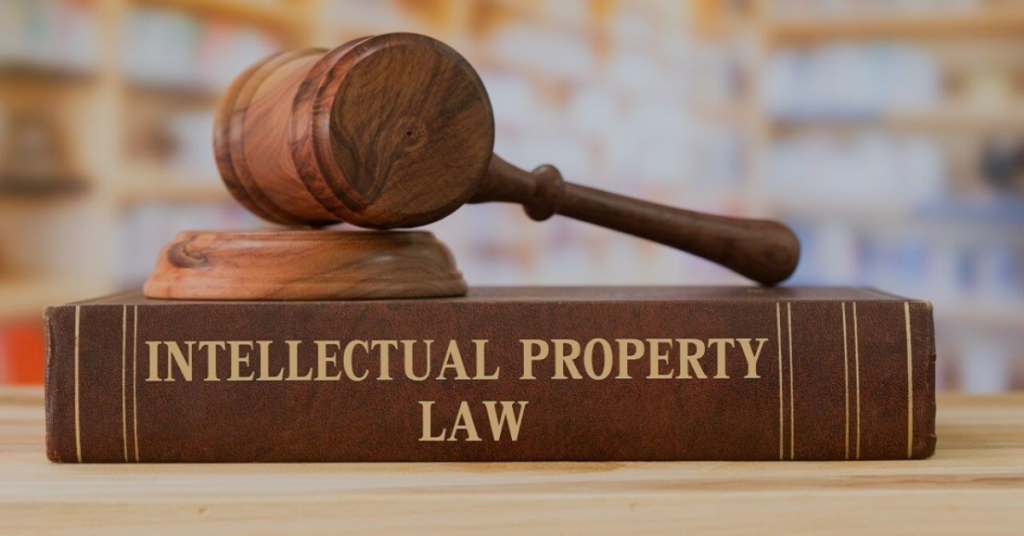Exploring Chandigarh’s Legal Restriction on Physical Partition: A Detailed Guide
Chandigarh, known for its modern architecture and urban planning, operates under specific legal frameworks that impact property ownership and division. One crucial aspect is the restriction on physical partition of certain types of properties. This article provides a detailed exploration of this legal constraint within the context of property dispute resolution in Chandigarh, focusing on the regulations, exceptions, and available alternatives.
Understanding Partition Under Indian Law
Partition, in the Indian legal context, refers to the division of joint property among its co-owners, resulting in each owner having a defined and separate title to their respective share. This division can be achieved through various methods, including mutual agreement, arbitration, or a court decree. The fundamental aim is to convert joint ownership into individual ownership.
However, the ability to physically divide a property isn't always guaranteed. Several factors, including local regulations, building codes, and the nature of the property itself, can influence whether physical partition is legally permissible.
Chandigarh's Unique Context: Planned City and Restrictions
Chandigarh's status as a planned city significantly impacts property ownership and the rules governing partition. The Chandigarh Administration has implemented regulations to maintain the city's planned layout, prevent haphazard development, and ensure infrastructure remains functional. These regulations often translate into restrictions on physically partitioning properties, particularly residential properties.
The primary reason for these restrictions is to preserve the integrity of the original architectural design, maintain the planned density, and prevent strain on the city's infrastructure (water supply, sewerage, electricity, and road network). Uncontrolled subdivision could lead to violations of building bylaws, increased density, and ultimately, a decline in the quality of life.
The Prohibition on Fragmentation of Sites and Buildings
A key aspect of Chandigarh’s legal framework is the prohibition on fragmentation of sites and buildings. This prohibition is primarily found in the Chandigarh Building Rules and regulations, which are periodically amended and updated. The core principle is that a dwelling unit, once approved and constructed according to the sanctioned plan, cannot be physically divided into multiple independent units without specific permission and adherence to stringent conditions.
This restriction is particularly relevant to residential houses and plots. The aim is to prevent the unauthorized conversion of single-family dwellings into multi-family units, which could strain resources and alter the character of the residential areas.
Legal Basis: Acts and Regulations
The restrictions on physical partition in Chandigarh are based on a combination of laws and regulations, including:
-
The Punjab New Capital (Periphery) Control Act, 1952 (as applicable to Chandigarh): This Act regulates development in the periphery of Chandigarh and aims to prevent unauthorized construction and fragmentation of land. Although its primary focus is the periphery, its principles influence overall planning and development control within the city.
-
The Capital of Punjab (Development and Regulation) Act, 1952: This Act provides for the regulation of building operations and the development of land in the capital (Chandigarh). It empowers the Chandigarh Administration to frame rules and regulations to control construction and prevent unauthorized development.
-
Chandigarh Building Rules: These rules lay down the specific requirements for construction, including permissible building heights, setbacks, coverage areas, and permissible uses of land. They also contain provisions restricting the subdivision of plots and buildings.
-
Chandigarh Estate Rules, 2007: These rules govern the transfer, mutation, and management of properties in Chandigarh. While not directly addressing physical partition, they set the framework for property rights and ownership, which indirectly influences partition matters.
-
The Transfer of Property Act, 1882: This central legislation governs the transfer of property rights in India. While it doesn’t specifically address Chandigarh's restrictions, it provides the general legal framework for property ownership and transfer, which is relevant in understanding the context of partition.
Situations Where Physical Partition is Generally Prohibited
Physical partition is typically prohibited in the following scenarios:
-
Violation of Building Bylaws: If the proposed partition violates any provision of the Chandigarh Building Rules regarding setbacks, coverage, height restrictions, or permissible uses, it will be rejected.
-
Creation of Undersized Plots: If the partition would result in plots or units that are smaller than the minimum permissible size as prescribed by the Chandigarh Administration, it will not be allowed. The minimum plot size varies depending on the sector and zoning regulations.
-
Adverse Impact on Infrastructure: If the partition would place undue strain on existing infrastructure (water supply, sewerage, electricity), the authorities may reject it. This is particularly relevant in older sectors where the infrastructure may not be designed to handle increased density.
-
Alteration of Approved Plans: Any partition that involves altering the approved building plans without proper authorization is prohibited. This includes adding new structures or modifying existing ones in a way that violates the original sanctioned plan.
-
Non-Compliance with Zoning Regulations: Chandigarh is divided into different zones (residential, commercial, industrial, etc.), and each zone has specific regulations regarding permissible land uses and building types. Any partition that violates these zoning regulations will be prohibited.
Exceptions and Potential Alternatives
While physical partition is generally restricted, there are exceptions and alternative solutions that co-owners can explore:
-
Amicable Settlement: The best approach is always to reach an amicable settlement among the co-owners. This could involve one owner buying out the shares of the others, or agreeing on a mutually acceptable division of the property that complies with the building bylaws.
-
Sale and Division of Proceeds: The co-owners can jointly sell the property and divide the proceeds according to their respective shares. This is often the most practical solution when physical partition is not feasible.
-
Family Settlement Deed: A Family Settlement Deed is a written agreement among family members to resolve property disputes peacefully. It can be registered with the Sub-Registrar to provide legal validity. This Deed can outline how the property will be managed or sold, even if physical partition is not possible.
-
Partition Suit (with Limitations): In certain limited circumstances, a co-owner can file a partition suit in court seeking a decree for partition. However, the court will consider the restrictions on physical partition imposed by the Chandigarh Administration and will not grant a decree that violates these regulations. The court might order a sale of the property and division of the proceeds instead of a physical partition.
-
Seeking Approvals for Alterations: If the existing structure allows, co-owners can apply to the Chandigarh Administration for permission to make alterations that would facilitate separate living arrangements while adhering to building bylaws. This might involve constructing separate entrances or modifying the internal layout.
-
Transfer of Undivided Shares: Co-owners can transfer their undivided shares to other co-owners or third parties. This doesn't physically partition the property, but it does allow individuals to consolidate ownership.
-
Conversion to Condominium (Potentially): In some cases, converting the property into a condominium may be possible, allowing for separate ownership of individual units within the building. However, this requires meeting stringent requirements and obtaining approvals from the Chandigarh Administration. This is a complex process and not always a guaranteed option.
Legal Recourse and Dispute Resolution
If co-owners are unable to reach a mutually agreeable solution, they may need to seek legal recourse. The following options are available:
-
Mediation and Conciliation: Mediation and conciliation are alternative dispute resolution (ADR) methods that involve a neutral third party helping the co-owners reach a settlement. These methods are often less expensive and time-consuming than litigation.
-
Arbitration: If the co-owners have an arbitration agreement, they can refer their dispute to an arbitrator. The arbitrator's decision is binding on the parties.
-
Civil Suit: As a last resort, a co-owner can file a civil suit in court seeking a partition decree or other appropriate relief. The court will consider the relevant laws and regulations, as well as the specific facts of the case, before rendering a decision.
Practical Considerations and Due Diligence
Before pursuing any course of action related to property partition in Chandigarh, it's crucial to conduct thorough due diligence. This includes:
-
Consulting with a Property Lawyer: A lawyer specializing in property law in Chandigarh can provide expert advice on the applicable laws, regulations, and procedures.
-
Reviewing Property Documents: Carefully examine the title deeds, sale deeds, and other relevant documents to understand the exact ownership structure and any existing restrictions.
-
Checking Building Bylaws: Consult the Chandigarh Building Rules and regulations to determine the permissible uses of the property and any restrictions on partition.
-
Obtaining Expert Valuation: Get the property valued by a qualified valuer to determine its fair market value. This is essential for negotiating a fair settlement or for dividing the proceeds of a sale.
-
Engaging an Architect: An architect can assess the feasibility of making alterations to the property that would facilitate separate living arrangements while complying with building bylaws.
Conclusion
The restrictions on physical partition in Chandigarh are a unique aspect of the city's legal framework, stemming from its planned urban development. Understanding these restrictions is essential for property owners to avoid legal complications and ensure compliance with local regulations. While physical partition may not always be possible, there are alternative solutions available, such as amicable settlements, sale and division of proceeds, and legal recourse through mediation or the courts. Thorough due diligence and expert legal advice are crucial for navigating these complexities and protecting one's property rights. By understanding the legal limitations and available alternatives, co-owners in Chandigarh can effectively resolve property disputes and achieve a fair and equitable outcome.




